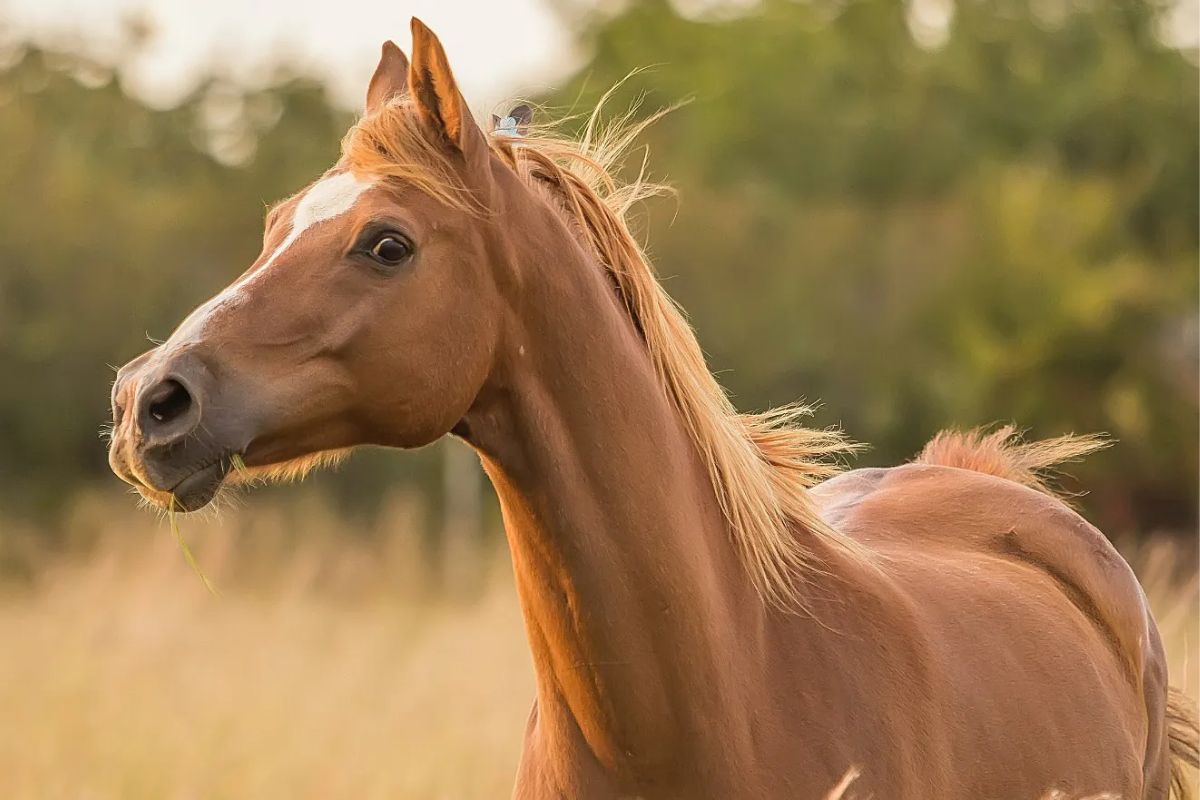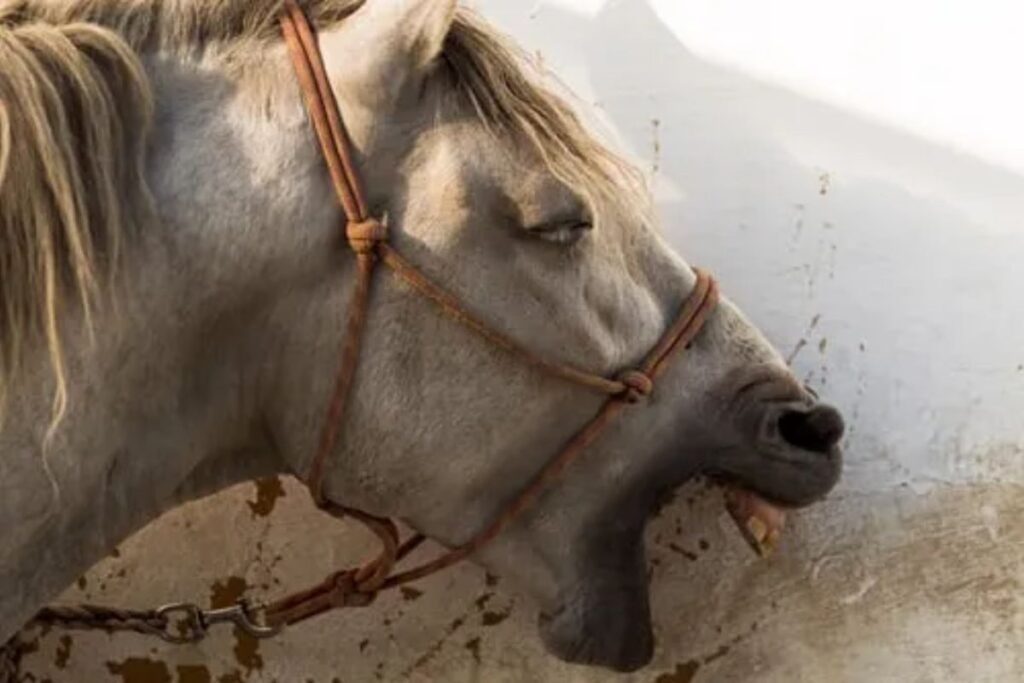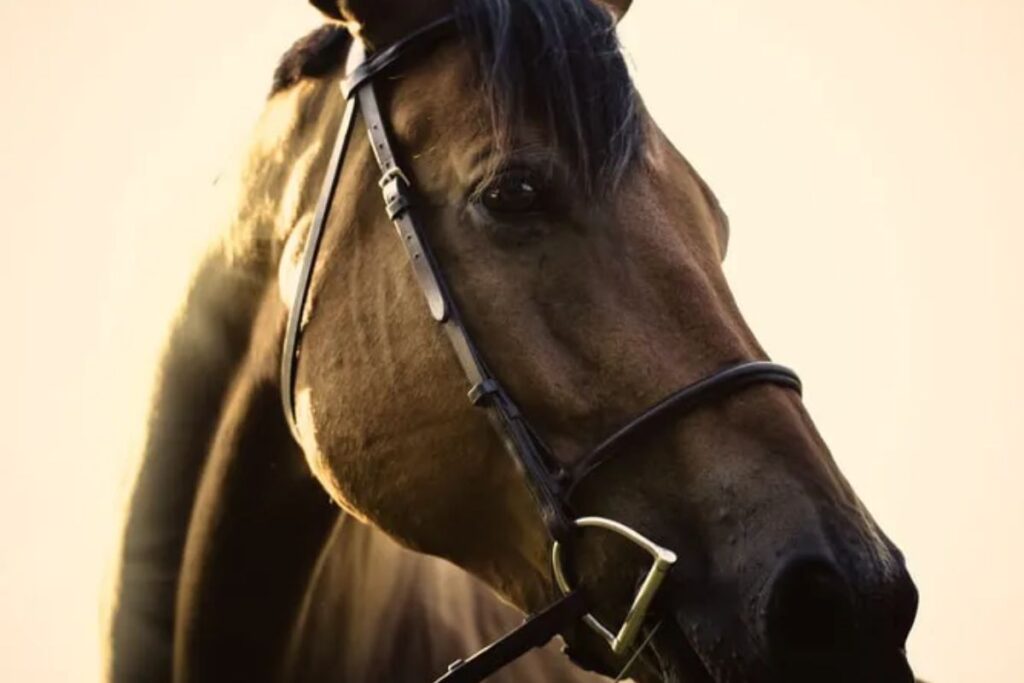Menu

Calming signals, a concept that is gaining more and more attention in the world of horses. And for a good reason. Familiarity with these signals can make a significant difference in general handling of horses and ponies - in ground training and riding. This is relevant to safety, performance, and equine welfare. However, we should not only know about calming signals, as a whole series of other signals can escalate when under pressure and stress.
When a horse or pony becomes tense or perhaps stressed, it will show certain signals. It does this to express stress or to alleviate stress in its own body, to avoid conflicts, or to de-escalate aggression or stress in other horses, humans or other animals. If the horse can't rid itself of the stress, and it escalates, it will typically exhibit increasingly strong signals.
Horses and ponies use many different signals, and they can be difficult for us humans to understand, as some of them can be quite subtle. Therefore, knowing what to look for is beneficial, and assistance can be found in the research conducted by Dutch researcher Rachaël Draaisma. She has analysed functions, behaviours, and interaction patterns among horses with a particular focus on the description of calming signals. This is something horses and ponies use to avert negative escalation and maintain a positive social climate.
Read also: Creating the perfect halt
When a horse's stress level is increased due to a change in its environment, for example, due to a human, an animal, a noise, or another stimulus, it will begin to exhibit calming signals.
Some of the calming signals observed in Rachaël's studies were: the horse blinks, looks away, has half-closed eyes, chews - possibly with its tongue out, yawns, turns its head away, walks in curves, etc.

If the horse can't relieve the pressure it feels, or it increases, it will exhibit displacement activities, such as the horse sniffing or digging in the ground without eating, rubbing its head/neck on its own leg, licking things, etc.
If the pressure is still there, or it increases, the horse will show stress signals, for example, by holding its head high, having rounder eyes, rounder nostrils, compressed lips, frequent defecation, or pacing back and forth when restrained, etc.
Read also: Avoid misunderstandings, which can result in reduced horse welfare
If the pressure is still present or increases further, the horse will maintain or increase the distance to what is "disturbing," a so-called distance-seeking signal, and this can be seen, for example, by it moving or chasing others, threatening to bite or kick, bucking, moving away from the "threat," etc.
Ultimately, if the pressure remains or increases, the horse goes into the 5 F's mode: Flight, Fight, Freeze, Fidget, Faint.
As the behaviour the horse exhibits through the signals helps to get the stress out of the body, it is important that we do not stop or interrupt the behaviour. Because then the stress stays in the body. We should rather try to calm the horse down.
In the case of sudden tension or shock, the signals are seen in reverse order compared to the above scale. They typically start high and then decrease as the tension diminishes or disappears completely.
It is important to note that many signals can have meanings other than calming. They should be seen in context. For example, a horse or pony can shake because of flies or have half-closed eyes while sleeping. It is therefore important to observe the horse in relation to its environment, activities, and general condition.
If you understand the horse's signals, you have the opportunity to help your horse or pony avoid unnecessary stress. If it is already stressed, you can use your knowledge to read whether its tension or stress remains at the same level, decreases, or increases. This gives you the opportunity to act and help the horse. This way, you can improve your partnership with the horse/pony, and you can also avoid potentially dangerous situations.
A pressured or stressed horse or pony can react violently if the pressure continues to be there or rises. If you, for example, ride in the forest, and your horse becomes afraid of something and reacts by jumping to the side, you might think "That was it." But maybe it still senses, hears, or sees what frightened it, so it remains tense. If you don't notice the signals, dangerous situations can arise if the horse runs/jumps/bucks/rears to get away from what it is afraid of. If you pick up on the signals, you can help the horse relax, for example, by calmly moving away from the scary thing, using mindfulness, or so-called bodywork, or other things that you know have a calming effect on the horse.
If you have a horse that gets stressed by being alone in the stable but only exhibits weak signals, you might not react to the signals and risk the horse suddenly trying to escape to the herd and breaking the chains, risking injuries to itself or you. The better you become at recognising the signals, the better set up you can make - in this case, perhaps by getting another horse into the stable.
Read also: How to make the most of your horse riding lessons

Learning becomes difficult or completely prevented by stress. If you have not noticed that your horse or pony is stressed and then start training or riding, the horse can't learn what you want it to learn. I see this happen usually causing great frustration for both horse and human. If you know the signals, you can use training and bodywork to help the horse relax before you start training or riding.
If the horse or pony's nervous system is constantly running in "overdrive", the immune system can become impaired, making it easier to get sick, get ulcers, etc. Here, it is of course also important to pick up the signals, so you can help it to relieve the stress, for example, by environmental training or changing the horse's surroundings.
Last but absolutely not least, you're a much better horse partner when you're aware of the signals, so you can assist your horse or pony. A fascinating and useful world opens up when we learn to see, feel, understand and use the horse's signals. This is excellent horsemanship and invaluable when stress arises.
Camilla Jacobs is behind the company HorseMama, which offers teaching, lectures, and workshops in harmonic horsemanship. Camilla is trained as a certified Horse in Harmony Trainer with Ute Lehmann and is also the author of the children's book "Braveheart moves in," which deals with horsemanship and how it can be used to interact with horses in a pleasant, harmonious, and safe way.